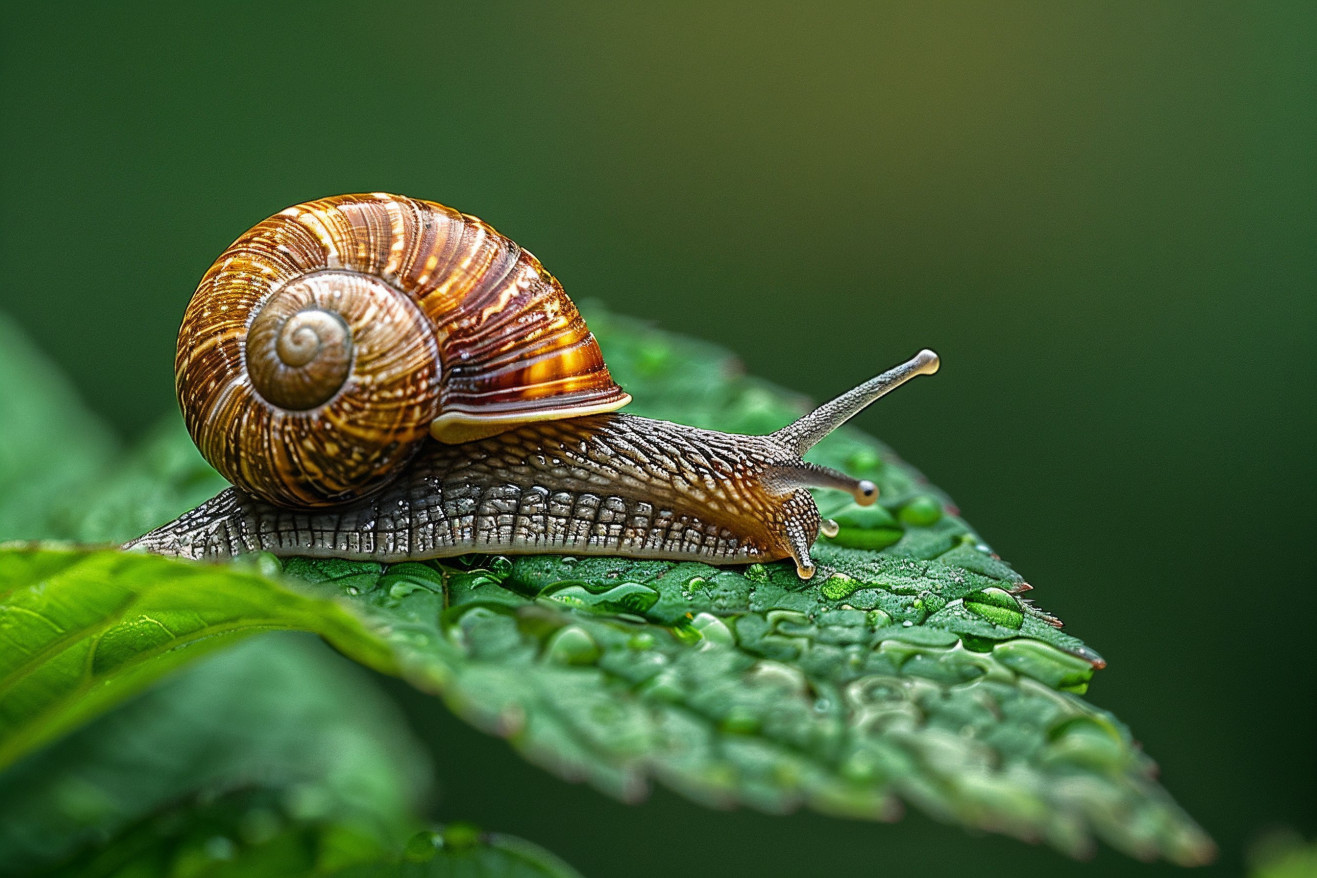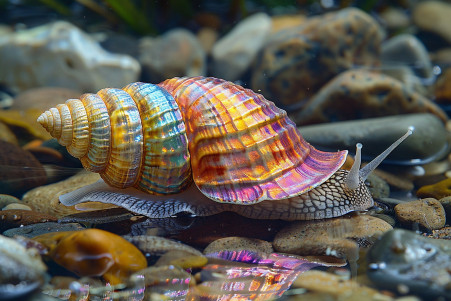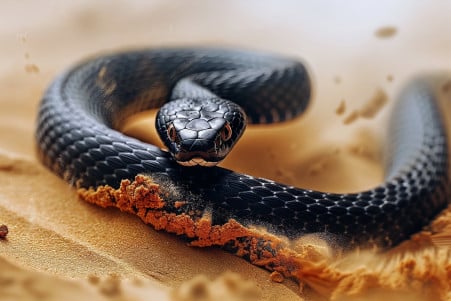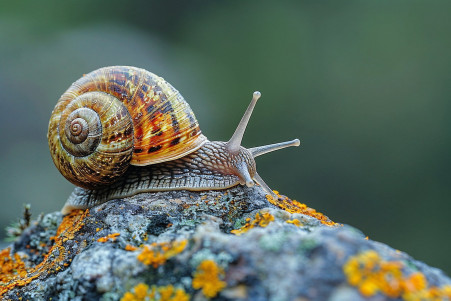Snail Speed: How Fast Can These Mollusks Move?
30 May 2024 • Updated 29 May 2024

Snails are famously slow, but their speed can vary based on a number of factors including species, temperature, and environment. Most species of snails move at a speed of 0.03 to 0.2 miles per hour, with the common garden snail clocking in at 0.03 mph and faster species like the semi-slug reaching up to 0.7 mph in optimal conditions.
To help you better understand the world of snail speed, we'll delve into comprehensive studies from the fields of malacology (the study of mollusks), biomechanics, and ecology. By exploring the biological, ecological, and evolutionary factors that enable snails to move, we hope to answer your questions about these unassuming yet adaptable animals that have roamed the planet for millions of years.
What is the typical speed range of snails?
How Do Snails Move? The Mucus-Powered Locomotion of Gastropods
Snails move by generating muscular waves along their muscular foot that interact with the mucus they secrete. This mucus enables the snail to stick to surfaces and slide along, and according to studies cited by Nature, it also reduces friction and increases suction, which is how snails are able to carry heavy loads like their shells.
This mucus-based locomotion enables snails to climb vertical surfaces and even move upside down, although as a study in NIH explains, the muscular contractions that drive the mucus waves actually lift the foot, so the mucus is only necessary when snails are climbing or moving inverted. This suction-sliding locomotion has inspired the development of robots that use the same locomotion method, with water instead of mucus used to create the suction that enables and propels adhesion to vertical surfaces. This makes it an efficient, high-payload, and low-energy form of robotic adhesive locomotion.
Other Things That Affect Snail Speed: Size, Terrain, and Environmental Conditions
The texture and orientation of the substrate have a big effect on snail speed. In a study published in the Journal of Zoology, it was found that rougher surfaces like sandpaper slowed snails down because the roughness interfered with the snail's mucus adhesion. The study showed that the crawling speed across rough sandpaper had a clear inversely proportional relationship between the size of abrasive particle and speed.
Snail size doesn't seem to matter, but younger snails are faster than older ones. According to The Conversation, a snail's ventral foot locomotion, which involves muscular waves and mucus secretion, limits their speed based on the number of foot contractions and the amount of mucus they secrete.
Environmental conditions, such as temperature and moisture, can also affect how fast snails can move. As National Geographic explains, warm and moist conditions are more conducive to faster movement than hot and dry conditions. This shows the importance of the many environmental adaptations that have allowed these creatures to survive and thrive.
Evolutionary Reasons for Snail Slowness
Snails' slow speed is a key part of their evolutionary success, according to Atlas Obscura. Their diet of plants or other immobile organisms means they don't need to move quickly, and they rely on defense mechanisms like shells and camouflage more than speed. As The Conversation explains, snails usually retreat into their shells to hide from predators, and land slugs use their coloring to match their environment.
That said, some predatory snails have evolved to move more quickly to catch their prey, which is often other slow-moving snails. For example, the Rosy Wolf snail can track the mucus trails of other snails and slugs and move at a relatively speedy 0.001 mile per hour. Still, for the most part, the slow speeds of snails and slugs help them conserve energy and fit into their ecosystems, according to HowStuffWorks.
Real-World Applications: Snail-Inspired Robotics and Adhesives
One of the most exciting applications of the sliding suction mechanism is in the development of climbing robots. These robots can climb walls and other surfaces by using water or artificial mucus to create the sliding suction that snails use to move.
The sliding suction method enables efficient, high-payload, and low-energy adhesive locomotion, and this has been exploited in the development of climbing robots, which is detailed in a Nature Communications article and covered by New Atlas.
According to Newswise, the sliding suction mechanism allows a lightweight robot to climb walls and even hang upside down while carrying heavy loads at high speeds, all without requiring any energy to maintain adhesion. Interesting Engineering reports that the robot can carry a load 11.5 times its own weight.
As a result, the snail-inspired climbing robot has potential applications in inspection, maintenance, and access to confined spaces, as described by Hackster.io. Meanwhile, the development of snail-inspired adhesives could also lead to the creation of new gripping and attachment technologies that take advantage of the snail's impressive suction and sliding capabilities.
Conclusion: The Amazing Adaptability of Snail Locomotion
Snails have been able to survive and thrive in a wide range of environments for millions of years despite their slow speed. This is largely due to the way they move, which enables them to effectively travel across different types of surfaces and landscapes. Snail locomotion has also been used to develop new technologies in the fields of robotics and adhesives.
Understanding snail locomotion can also tell us a lot about how species evolve and adapt to their environments. These slow-moving animals are a great example of how speed isn't always the key to survival in the natural world.


